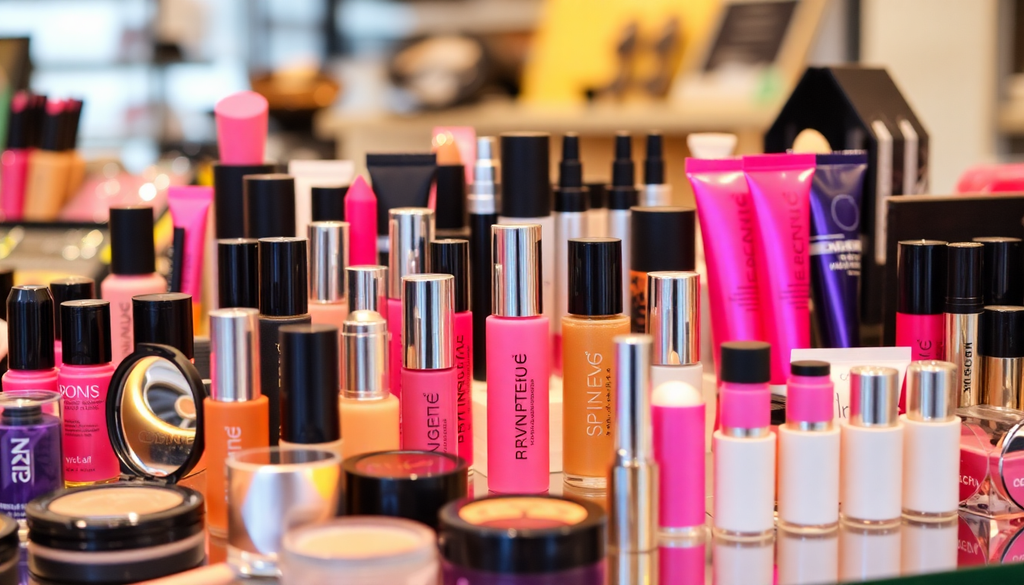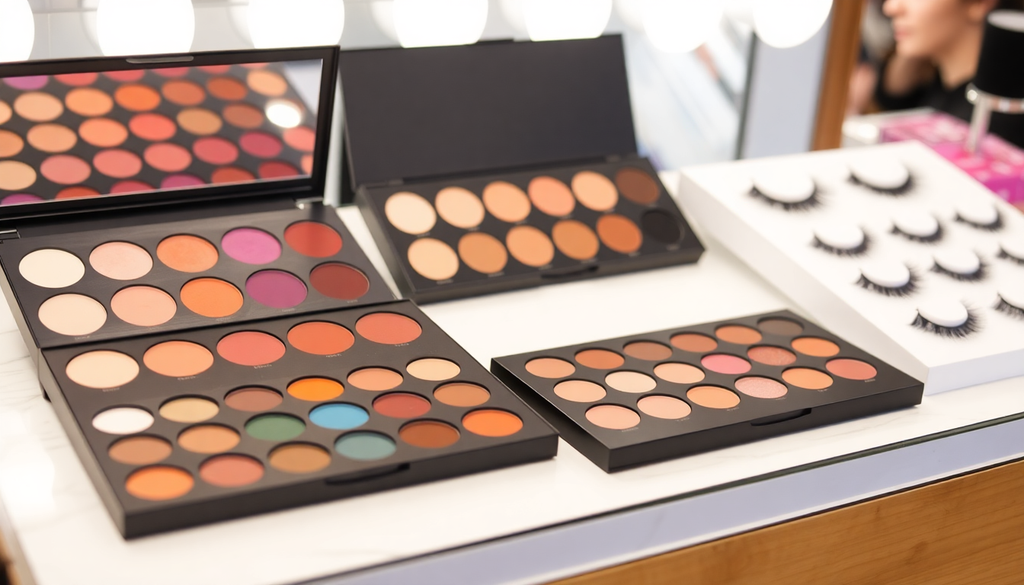
The Essential Guide to Launching Your Makeup Brand: From Private Label Eyeshadow Palettes to Magnetic Lashes in 2025
Introduction
Launching a makeup brand in 2025 can be an exciting yet daunting endeavor. With the beauty industry constantly evolving and an increasing number of competitors, it's essential to have a solid plan in place. This guide will cover everything from private label eyeshadow palettes to magnetic lashes, providing you with the essential information needed to launch your makeup brand successfully.
Understanding the Makeup Industry Landscape
Before diving into the specifics of launching your brand, it's crucial to understand the current makeup industry landscape. The global beauty market is projected to reach $750 billion by 2025, making it a lucrative opportunity for aspiring entrepreneurs. Here are key factors to consider:
- Market Trends: Research the latest trends in makeup, from eco-friendly packaging to the rise of clean beauty products. Consumers are increasingly looking for brands that prioritize sustainability and ethical sourcing.
- Target Audience: Identify your target demographic and tailor your products to meet their needs. Understanding age, lifestyle, and preferences will help you develop products that resonate with your audience.
- Competitor Analysis: Study successful brands and assess their strengths and weaknesses. Analyze their product offerings, marketing strategies, and customer engagement to identify gaps in the market.
Step 1: Sourcing Your Products
Once you have a clear understanding of the market, the next step is sourcing your products. Here are some options to consider:
- Private Labeling: Partner with manufacturers to create private label eyeshadow palettes and other products under your brand name. This approach allows you to leverage established formulations while focusing on branding and marketing.
- Custom Formulations: Work with cosmetic chemists to develop unique formulations that set your brand apart. This option gives you full control over ingredients, textures, and colors, aligning with your brand vision.
- Magnetic Lashes: Consider adding magnetic lashes as a trendy product that appeals to a broad audience. They are easy to apply and remove, making them a popular choice among makeup enthusiasts.
- Quality Assurance: Ensure that your chosen suppliers adhere to quality standards and regulations. Request samples and conduct quality checks before finalizing your product range.
Step 2: Navigating Regulations and Compliance
Understanding regulations is crucial when launching your makeup brand. Key considerations include:
- Cosmetics Labeling: Ensure your products comply with labeling requirements in your target markets, including ingredient listings and warnings. Familiarize yourself with regulations set by agencies such as the FDA in the U.S. or the European Commission in the EU.
- Import Policies: Familiarize yourself with import regulations and tariffs in the countries where you plan to sell your products. This knowledge will help you avoid unexpected costs and legal issues.
- Certifications: Obtain necessary certifications such as cruelty-free, vegan, or organic, if applicable. These certifications can enhance your brand's credibility and appeal to conscious consumers.
- Safety Testing: Conduct safety assessments and stability testing for your products to ensure they are safe for consumer use. This step is essential to prevent potential liabilities.
Step 3: Setting Up Your Online Store
In today's digital age, having a robust online presence is essential. Follow these steps to set up your makeup online store:
- Choose an E-commerce Platform: Select a platform that suits your needs, such as Shopify, WooCommerce, or BigCommerce. Evaluate features like payment processing, inventory management, and ease of use.
- Design Your Website: Create an attractive and user-friendly website that showcases your products effectively. Invest in high-quality images and engaging content to enhance the shopping experience.
- Payment Gateways: Set up secure payment options to facilitate smooth transactions for your customers. Offer various payment methods, including credit cards, PayPal, and digital wallets.
- Mobile Optimization: Ensure your website is mobile-friendly, as a significant portion of online shopping is done via mobile devices. A responsive design will improve user experience and boost conversion rates.
- SEO Optimization: Optimize your website for search engines by using relevant keywords, creating quality content, and improving site speed. This will help increase your visibility and attract organic traffic.
Step 4: Marketing Your Makeup Brand
Once your products are ready and your online store is set up, it's time to market your brand. Consider the following strategies:
- Social Media Marketing: Utilize platforms like Instagram, TikTok, and Pinterest to showcase your products and engage with your audience. Create visually appealing content that highlights your makeup products in use.
- Influencer Collaborations: Partner with beauty influencers to reach a wider audience and build credibility. Look for influencers whose values align with your brand and who can authentically promote your products.
- Email Marketing: Build an email list to keep your customers informed about new products, promotions, and brand news. Use personalized emails to enhance engagement and drive sales.
- Content Marketing: Create valuable content such as makeup tutorials, product reviews, and beauty tips to establish your brand as an authority in the industry. This can help attract potential customers to your website.
- Paid Advertising: Invest in targeted advertising campaigns on platforms like Facebook and Google Ads to reach potential customers. Utilize retargeting strategies to convert website visitors into buyers.
Step 5: Building Your Brand Identity
A strong brand identity is crucial for standing out in a crowded market. Here are some tips for building your brand:
- Brand Story: Craft a compelling brand story that resonates with your audience. Share your mission, values, and the inspiration behind your products.
- Logo and Visuals: Develop a memorable logo and cohesive visual elements that reflect your brand's personality. Consistency in branding helps create recognition and trust.
- Packaging: Invest in eye-catching packaging that not only protects your products but also enhances the unboxing experience. Consider sustainable packaging options to appeal to eco-conscious consumers.
- Customer Engagement: Foster a community around your brand by engaging with customers on social media and responding to their feedback. Building relationships can lead to brand loyalty and repeat purchases.
Step 6: Scaling Your Business
Once your brand is established and generating sales, you can focus on scaling your business. Consider these strategies:
- Product Expansion: Introduce new colors, shades, or product types to keep your offerings fresh and exciting for customers. Stay informed about trends to ensure your new products meet market demand.
- Retail Partnerships: Explore opportunities to partner with brick-and-mortar retailers or beauty boutiques to expand your reach. Having a physical presence can enhance brand visibility.
- International Markets: Consider expanding into international markets if your brand gains traction locally. Research regulations and market demand in your target countries.
- Invest in Technology: Leverage technology and analytics to track sales, customer behavior, and inventory management. Data-driven decisions can improve operational efficiency and marketing effectiveness.
Conclusion
Launching your makeup brand in 2025 requires careful planning, research, and execution. By understanding the industry, sourcing quality products, navigating regulations, setting up an online store, building a strong brand identity, and implementing effective marketing strategies, you can successfully establish your brand in the competitive beauty market. Embrace creativity and innovation, and your brand could become the next big thing in makeup! With dedication and a clear vision, you'll be well on your way to achieving your dreams in the beauty industry.
Share

Launching Your Makeup Brand in 2025: Essential Insights on Private Label Cosmetics, Import Policies, and Marketing Strategies



